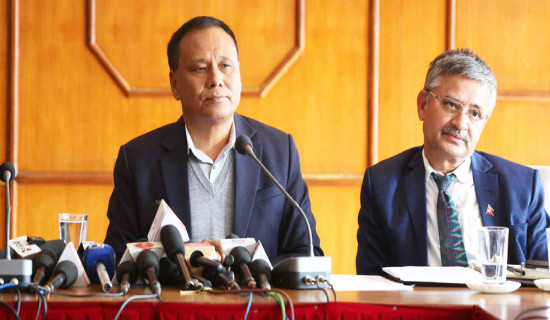- Wednesday, 24 December 2025
Cleanliness Of Rivers
With a considerable population growth and rapid but unplanned urbanisation, the Kathmandu Valley has been facing diverse challenges ranging from managing sewerage systems and river and air pollution to delivering clean drinking water to citizens. In Kathmandu alone, many sewerages that were constructed without considering the environmental aspect properly are often found not functioning well, causing critical level of pollution. It is essential for the responsible authorities to have an effective coordination among themselves in order to ensure that basic infrastructures like roads, sewerages and water supply pipelines are in a good condition. When such infrastructures are in order, citizens will not have to go through unwanted problems. As mentioned above, the valley dwellers have been suffering from various forms of pollution, especially that of water and air.
However, environment activists and various agencies have joined forces to restore the past glory of the major rivers such as the Bagmati and Bishnumati. Some progress has also been made in this connection. But much still remains to be done to keep these rivers neat and clean. The Bagmati Clean-up Campaign that had kicked off more than a decade back has continued as of now. With growing public awareness of the importance of keeping rivers free from pollution, the locals of the Bishnumati and Hanumante corridors also seem to have followed suit to enhance cleanliness of these rivers. This really deserves lots of applauds though it will not solve the problem in totality.
The Kathmandu Valley is home to as many as 57 rivers and rivulets as tributaries of the Bagmati River. The largest river of the valley originates from Bagdwar. There are innumerable shrines, temples and funeral sites on the banks of this river. Gokarneshwar, Guheshwari and Pashupatinath temples are some of the famous shrines located close to the river.
The High Powered Committee for Integrated Development of Bagmati Civilisation (HPCIDBC) has remained dedicated to protecting the Bagmati civilisation. The Bagmati Action Plan (2009-14) has been approved by the government. Under this initiative, a concept of zoning the river system within the valley was adopted. The entire river system has been divided into five zones -- Natural Conservation Core Zone, Rural Zone, Peri-urban Zone, Urban Zone and Downstream Zone. This categorisation helps the authorities effectively deal with the vital to make the Bagmati river system clean, green and healthy.
Meanwhile, as part of reducing pollution in the Bagmati River, a water treatment plant has been built at the Guheshwori area. With the operation of this plant, the river will become much cleaner. The government is also constructing more water treatment plants in other parts of the Bagmati River system. Inaugurating the plant on Sunday, Prime Minister Sher Bahadur Deuba hoped that the Pashupati area would welcome more pilgrims in the future. The Pashupatinath Temple, a UNESCO World Heritage Site, is a centre of faith for Hindus from around the world.
The Prime Minister instructed the authorities concerned to expedite the construction of water treatment plants at Balkumari, Dhobighat, Sallaghari, Hanumanghat, Gokarna and other areas. The government has accorded priority to the task of water treatment as it aims to maintain cleanliness in rivers and provide clean water to the citizens. The government needs to carry out the entire works of the drain and sewerage management in an integrated manner for maintaining the cleanliness and sanctity of the holy rivers of the Valley.

















